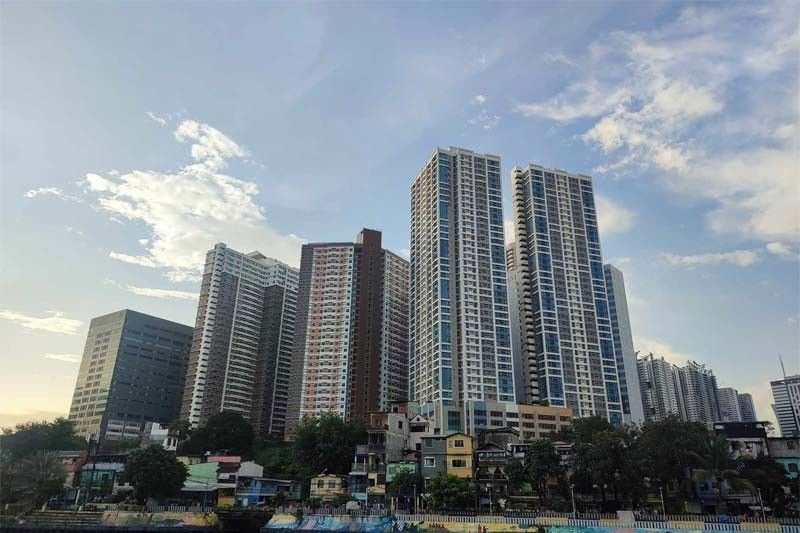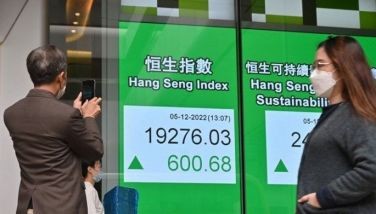Philippine economy likely rebounded in Q3

MANILA, Philippines — Economic growth likely grew at a faster pace in the third quarter after slowing for three straight quarters amid challenges brought about by elevated inflation and soaring interest rates, according to economists.
Jun Neri, lead economist at Ayala-led Bank of the Philippine Islands, said the country’s gross domestic product (GDP) growth likely accelerated to 6.1 percent in the third quarter.
Economic growth slowed to 6.4 percent in the first quarter and 4.3 percent in the second quarter of this year. The economy grew by 7.5 percent in the fourth quarter of last year.
“Government outlays appear to have improved in the third quarter compared to the second quarter, however, the faster inflation in August and September was likely a damper on consumer confidence,” Neri said.
The economy grew by 5.3 percent in the first half and needs to grow by at least 6.6 percent in the second half to at least meet the lower end of the six to seven percent growth target penned by economic managers.
BPI said economic growth may slow to 5.8 percent this year after accelerating to 7.6 percent last year from 5.7 percent in 2021.
The economy contracted by 9.5 percent in 2020 due to strict COVID quarantine and lockdown protocols.
“We think the biggest risk to the fourth quarter growth is inflation remaining elevated. A huge challenge to growth is softening investment activity, particularly in construction as materials remain expensive and high vacancy rates in office real estate keep some developers cautious,” Neri warned.
The Bangko Sentral ng Pilipinas (BSP) has raised key policy rates by a total of 450 basis points, including the 25-basis-point off-cycle hike on Oct. 26, to prevent supply-side price pressures from inducing additional second-round effects and further dislodging inflation expectations.
Michael Ricafort, chief economist at Rizal Commercial Banking Corp., said the GDP growth likely quickened to six percent in the third quarter after slowing further to 4.3 percent in the second quarter.
Ricafort said the growth was supported by catch up spending by the national government, especially on infrastructure, after some underspending earlier in 2023.
Ricafort also cited the robust remittance growth from overseas Filipino workers (OFWs), improving employment data after the global health pandemic, low base effect in the third quarter of last year, local election-related spending, and the recovery in both foreign and local tourism.
However, the economist noted that higher prices could further reduce spending by consumers, businesses, government, and other institutions.
The Yuchengco-led bank sees the Philippine economy growing within a range of 5.5 to six percent this year.
Security Bank chief economist Robert Dan Roces said the economy may have expanded by five percent during the July to September period, largely supported by increased government expenditure.
Roces added that private consumption would remain the driver, albeit slower with demand waning due to inflation, but expects surprises with the upcoming holiday season.
“Nevertheless, we observe a waning consumer demand that may act as a drag on private consumption,” Roces said.
Security Bank expects the GDP expansion to slowdown this year to 5.6 percent from 7.6 percent last year.
Inflation averaged 6.6 percent from January to September, well above the BSP’s two to four percent target range. After easing for six straight months to 4.7 percent in July from a peak of 8.7 percent last January, the rise in the prices of essential goods and services quickened to 5.3 percent in August and 6.1 percent in September.
China Bank chief economist Domini Velasquez believes the GDP growth settled at 4.9 percent in the July to October period.
“Household spending was still resilient although we estimate growth to be slower, as above-target inflation further bites into demand. Government spending likely recovered after contracting in the second quarter. We saw the government ramp up spending in the third quarter, particularly for infrastructure, to catch up with the fiscal program,” Velasquez said.
However, she warned that growth in public construction could be dampened by weaker activities on the private side given the high interest rate environment.
She added that goods exports are on a path to recovery, which bodes well for the country’s trade performance, especially as imports would no longer benefit from favorable base effects starting the fourth quarter of this year.
“On the supply side, we expect services to remain the primary engine of growth with strong gains in transportation, accommodation, food service activities, and arts and recreation. Manufacturing likely saw some increased demand in preparation for the holidays,” Velasquez said.
The economist remains pessimistic about agriculture as strong typhoons hit the country in July and August, while El Niño continues to pose a risk on production.
“Moving forward, we expect increased activities during the holiday season to bolster support to the economy, although the fourth quarter and full-year growth will still likely fall short of the government’s six to seven percent target,” she said.
China Bank sees the GDP growth slowing to around 5.2 percent this year before faring better in 2024 as inflation and interest rates go down.
Sanjay Mathur, chief economists for Southeast Asia and India at ANZ, said the Philippine economy likely grew higher at 4.5 percent in the third quarter from 4.3 percent in the second quarter.
Mathur cited that buoyant consumption credit growth and a rise in tourist arrivals supported growth in the third quarter, while external demand stayed weak.
“We believe GDP growth will continue to stabilize in the coming quarters. Both monetary and fiscal policy will remain restrictive and will not support growth. We may see some boost if exports recover meaningfully but that will likely take time,” Mathur added.
ANZ penned a GDP growth forecast of five percent for 2023 and 5.6 percent for 2024.
- Latest
- Trending





























